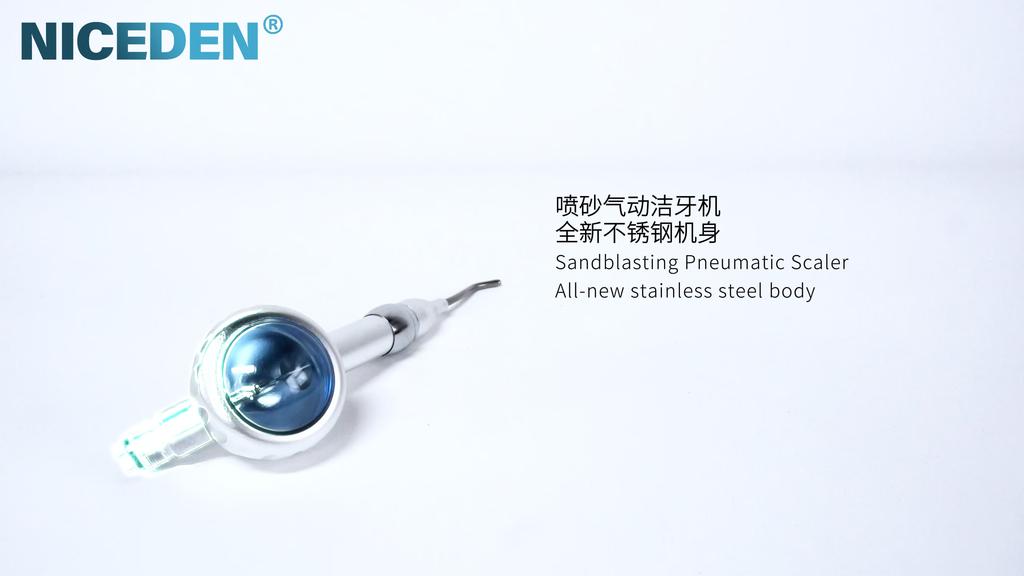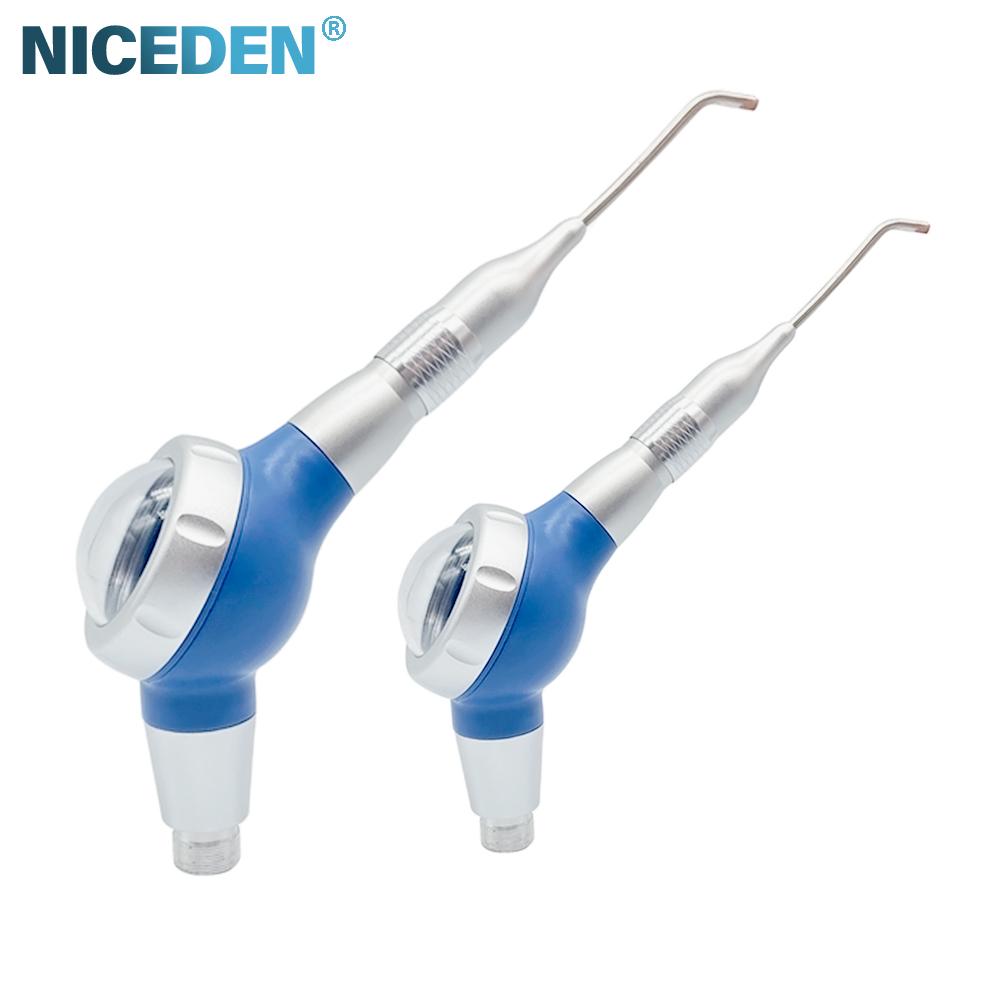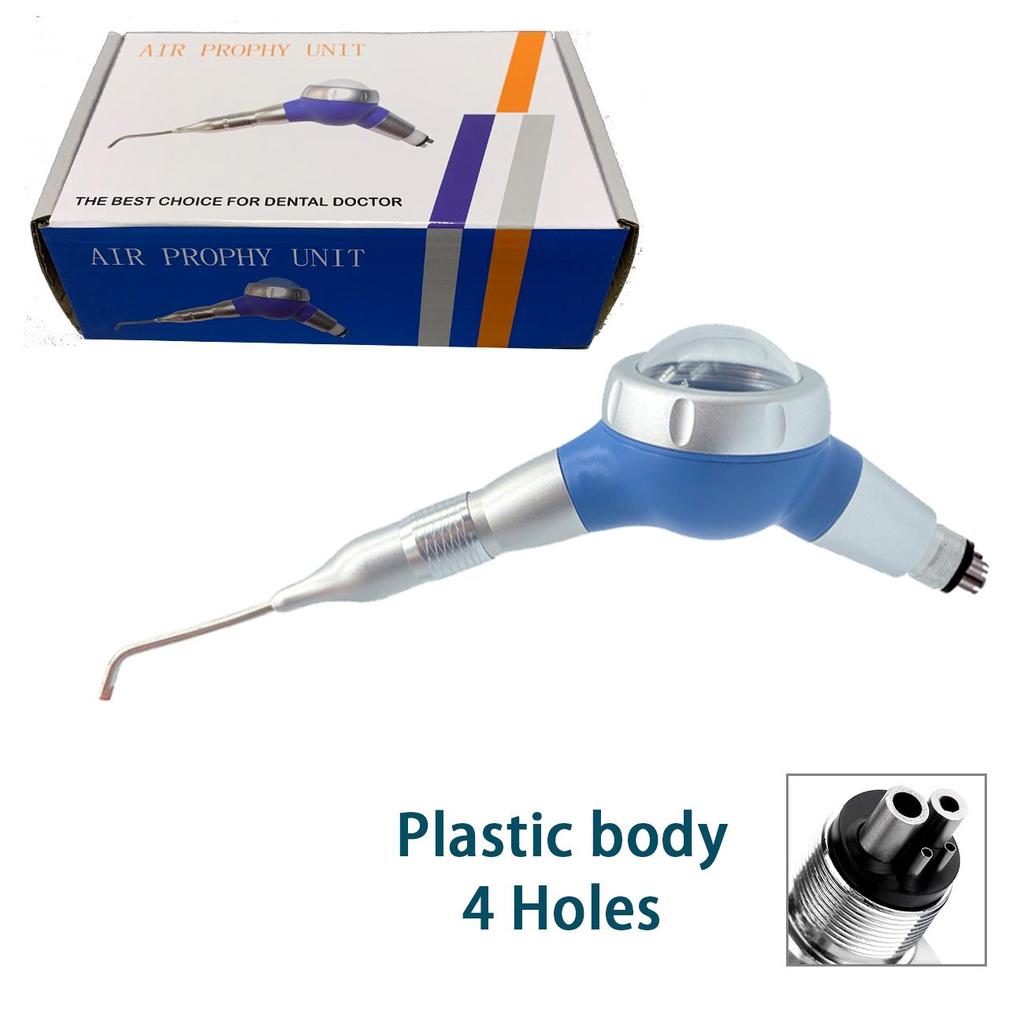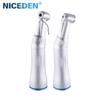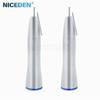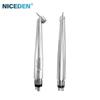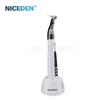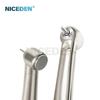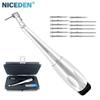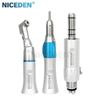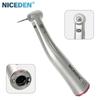一.What is the product?
Dental sandblasting gun is a professional equipment that uses high-speed airflow to mix special sandblasting powder to remove plaque, pigments, and soft deposits on the surface of teeth. It has both cleaning and polishing functions and is widely used in periodontal treatment, implant maintenance, and other fields. It uses compressed air to drive water flow to mix with micron sized sand powder (such as sodium bicarbonate) to form a high-speed jet, which physically flushes plaque, pigments (such as smoke and tea stains), and soft deposits on the surface of teeth, gingival sulcus, and periodontal pocket.
Compared with traditional ultrasonic cleaning, it can treat difficult to reach areas such as dental gaps and grooves, especially suitable for cleaning around orthodontic brackets and maintaining implant surfaces. Dental sandblasting guns have become the core tool for modern periodontal treatment and preventive care through refined sandblasting technology.
From portable handheld devices to fully automated implant processing systems, their development balances efficiency and minimally invasive techniques. When selecting, it is necessary to consider clinical needs (such as subgingival depth, implant maintenance) and operational experience (such as anti blocking design, sterilization compatibility) to achieve the best treatment effect
二.product feature
Nmuber:Wh-10508
Size:165*80*55mm
Weigth:195kg
Connector: 2/4holes.
Gas supply pressure :2.5-4.0bar(2500-4000hPa)
Water supply pressure: 0.7-2.0bar(700-2000hPa)
Operation air pressure:0.3-0.6kg/c㎡.
Sand amount: 1.5g/min-3.59g/min.
Sandblasting flow rate: 1.5 grams per minute -3,59 grams per minute
Blasting hole: 0.4mm.
Blasting head rotate:360°.
Mean particle size:30-90um.
Water spray function:with.
Water flow rate: 50-80ml/min.
三.Core functions and advantages
1.what is the function?
Using minimally invasive physical flushing instead of mechanical scraping, breaking through the limitations of traditional cleaning, particularly skilled in:
(一) Efficient removal of stubborn sediment
Compressed air drives water and sand powder (such as sodium bicarbonate and glycine powder) to form a high-speed jet, directly impacting the tooth surface.
Removal targets: exogenous pigments (cigarette stains, tea stains, coffee stains), gingival/subgingival plaque biofilm, soft plaque around orthodontic brackets, and surface contaminants on implants
(二) Safe polishing protection (protecting enamel/implant surface)
Surface polishing: After sandblasting, the smoothness of the tooth surface is significantly improved, reducing the foundation of plaque attachment and delaying re contamination.
Compared to traditional instruments: avoid enamel scratches caused by metal instrument scratching (crucial for the titanium surface of implants).
Minimally invasive: Fine particle sand powder (such as 27um glycine powder) can be safely used for dentin and root surface, reducing postoperative sensitivity.
(三)Efficient pigment removal (5-minute full mouth tea stain removal)
This makes it a key tool for modern preventive dentistry and minimally invasive treatment
2.product advantages
(一)Ergonomic Design
Lightweight handle, dynamic wrist control design, reduces doctor's operational fatigue, 360 ° rotating nozzle, adapts to different tooth position angles
(二)Hygiene and safety characteristics
Anti reflux design, prevents cross infection, high-temperature disinfection handle (some products have it)
(三)Parameter and performance optimization.
Precisely adjust the ratio of water/air/sand to avoid excessive sandblasting leading to dentin exposure.
四.operating steps
1.Preparation stage
(一)Wear goggles and a mask (to prevent powder splashing)
(二)Check air pressure: 0.4-0.6MPa (initially recommended 0.4MPa)
2.Powder loading
Open the powder can --->Pour in exclusive powder --->Tighten
3.Trial spray test
Step on the switch --->Spray the tissue for 1 second (check powder uniformity)
4.Oral operation
(一)The nozzle is 5-10mm away from the teeth.
(二)45 ° oblique to the tooth surface ->uniform movement.
(三)Avoid the gums! Key areas for spray dyeing.
5.postoperative treatment:
(一)Patient mouthwash --->Apply fluoride to the tooth surface to prevent sensitivity.
(二)Machine cleaning: Air spray for 10 seconds --->Powder unloading tank cleaning.
五.Instructions for the Use of consumables
1.Whitening powder: 1 can ≈ 50 operations, replenish after each use, and cannot be used if it gets damp or clumps.
2.Nozzle: 1 nozzle, replace after 30 sterilization cycles, unclog blockages with a needle.
3.Sealing rings: 2 pieces, checked and replaced monthly. Damaged ones may cause air leakage.
六.FAQ
Q1:Does it hurt?
A:Like the feeling of wind blowing through teeth, most people feel painless (sensitive individuals can reduce air pressure).
Q2:How much white can it be?
A:Differ from man to man! Yan Qing patients usually increase their color levels by 3-5 levels.
Q3:Is it okay for home use?
A:Professional operation is required! Clinic specific equipment, household use may damage gums.
Q4:How often do it?
A:Suggest 1-2 times a year, with a maximum of 1 time per quarter for heavily stained individuals.
七.safety warning
Sand powder matching: Special fine sand powder is required for subgingival treatment to avoid tissue damage.
Contraindications: Patients with severe periodontitis in the acute phase and respiratory diseases should use with caution (avoid inhaling sand powder).
Maintenance requirement: Regularly clean the powder path to prevent blockage, especially when using sodium bicarbonate powder that is prone to moisture absorption.








